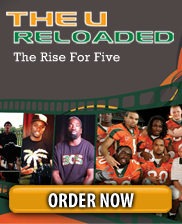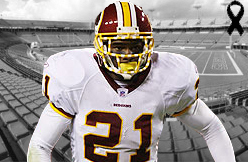Nov/27/12 08:25 AM Filed in:
Sean TaylorIt’s five years since I got a 7 a.m. phone call on a Tuesday morning from the office to say Sean Taylor had died, and all I have still is the same emptiness. And questions. Hard questions. Some of which I know the answers to but don’t want to hear. And others no one can know.
I still wonder: How does a kid who had met Taylor — a friend of his sister who had attended a party once at his house — end up being part of a botched home invasion and robbery that ends up costing Taylor his life? How many bad decisions did he have to be a part of before he threw away his own life?
Why hasn’t the man fingered as the gunman been sent away for life already? How is Eric Rivera, who was 17 at the time, not scheduled to see trial until next April — assuming that date isn’t postponed for some judicial matter that prevents Taylor’s family and friends from perhaps even an ounce of understanding or closure?
I wonder when has someone you knew actually died after they had been shot in the leg? Five years later, the chances of a bullet striking the femoral artery, of losing so much blood in so little time, just seems so random and wrong.
Then there are the what-ifs about his career, which seemed destined for more Pro Bowls, more comparisons to the all-time greats at his position. How good could Sean Taylor have been?
We tend to be kind to the supernovas that burn so brilliantly for so few years before leaving us much too soon. Sean Taylor has become football’s James Dean, Jim Morrison or Tupac Shakur — taken in the infancy of his fame.
Would he have been Ronnie Lott-good, better than the greatest hard-hitting safety in NFL history? Or just Kenny Easley- and Donnie Shell-good, which is still great? Would he have put up better numbers than Ed Reed and gone down as the best University of Miami safety to play in the NFL?
Or would his penchant for controlled malice have gotten him in more hot water than James Harrison in the new safety-conscious NFL?
There are also the personal questions Sean Taylor never answered. Who was he? I tried to find out about a month before his death, but he wouldn’t let me in.
“You don’t want to see the good in a person like Sean,” Clinton Portis, his closest friend on the team, told me then. “You don’t want to understand the success or the pain he’s went through to be where he is.”
Only after his passing did we find out what a doting father he was to Jackie, the 18-month-old baby daughter innocently sashaying past her father’s casket, the most sorrowful moment I can remember from 2007.
Really, what kind of father could Sean Taylor be? That little girl is 6 today. She deserved to find out.
Before all the testimonials at his memorial service of his childhood and the recent spiritual changes in him brought on by the birth of his daughter, we only knew that violence surrounded Taylor’s career and life. The son of a police chief, he had his own run-ins with the law — including allegedly chasing down thieves who stole his ATVs and pointing a gun at them.
Finally, how could someone we learned more about in death than in life connect so deeply with a fan base? Before Robert Griffin III, Sean Taylor had his own mystique and almost cult-like following.
He played a medieval sport with a fierceness and passion that still endears him to so many, some of whom still mourn him like family today, five years after his passing.

(washingtonpost.com)



